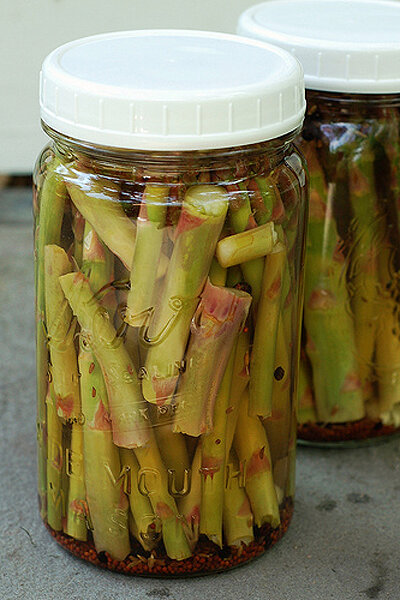By Eve Fox, Garden of Eating
Makes two 24-ounce jars
3 pounds asparagus, trimmed to fit your jars
1-1/2 cups apple cider vinegar
1-1/2 cups filtered water
2 tablespoons pickling salt
4 garlic cloves, peeled
2 teaspoons crushed red pepper flakes
2 teaspoons yellow or black mustard seeds
8 allspice berries
6 juniper berries
2 teaspoons black peppercorns
4 bay leaves
1. If you are new to canning, you should probably start here. Prepare a boiling water bath canner and two 24-ounce jars (you can also substitute four 12-ounce jelly jars). Place lids in a small pan of water and bring to a bare simmer.
2. Combine apple cider vinegar, water, and salt in a saucepan and bring to a boil.
3. Fill a pan with several inches of water and bring to a boil. While the blanching pot heats, wash asparagus and trim to fit in your jars.
4. When water is boiling, blanch asparagus for 60 seconds. When time is up, transfer asparagus to a colander and rinse with cold water.
5. Remove jars from the canning pot and drain. Divide garlic cloves, crushed red pepper flakes, bay leaves, juniper berries, allspice berries, peppercorns, and mustard seed evenly between jars. Pack asparagus spears into jars.
6. Pour pickling liquid over the asparagus, leaving 1/2 inch headspace. Tap jars gently to remove any air bubbles. Add more liquid to return headspace to 1/2 inch, if necessary.
7. Wipe rims, apply lids and rings, and process jars in a boiling water bath canner for 10 minutes. When time is up, remove jars from canner and let them cool on a folded kitchen towel. Let them cure for at least a week before eating.
Read the full post on Stir It Up!







